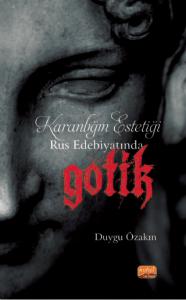-
RIGHTS & PERMISSIONS CATEGORIES
- Education (233)
- Psychology (124)
- See all
- (Will be deleted) Psychological Counseling, Career (9)
- Applied Psychology (22)
- Clinical Psychology (73)
- Developmental Psychology (23)
- Experimental Psychology (12)
- Introduction to Psychology (4)
- Social Psychology (20)
- Economics and Administrative Sciences (189)
- See all
- Aviation Management (12)
- Business (130)
- Econometrics (24)
- Economy (47)
- Finance - Tax (2)
- International Trade and Logistics (20)
- Labor Economics and Industrial Relations (11)
- Management Information Systems (10)
- Maritime Management (6)
- Public Administration and Political Science (76)
- See all
- International Relations (43)
- See all
- African Studies (1)
- Asia-Pacific-Far East Studies (2)
- Crisis and International Conflicts (2)
- International Migration (5)
- International Organizations (1)
- International Security (1)
- Introduction to International Relations (6)
- Middle Eastern Studies (6)
- Regional Studies (10)
- Russian Studies (2)
- Terrorism and Regional Security (3)
- Turkish Foreign Policy (10)
- Turkish World Studies (4)
- Law (11)
- Local Administrations, Urban and Environmental Policies (8)
- Political Science and Management (23)
- Social Sciences and Humanities (220)
- See all
- Anthropology (3)
- Geography (6)
- History (25)
- Liiterature (28)
- Linguistics (5)
- Philosophy (49)
- See all
- Ancient Philosophy (2)
- Contemporary Philosophy (6)
- Educational Philosophy (1)
- History of Philosophy (4)
- History of Science and Philosophy of Science (7)
- Introduction to Philosophy (6)
- Islamic Philosophy and Thought (20)
- Medieval Philosophy (2)
- Moral-Ethical Philosophy (8)
- Society and Political Philosophy (6)
- Sufi Philosophy (2)
- Research Methods (21)
- Sociology (77)
- See all
- Commune Problems (2)
- Communication Sociology (6)
- Criminal Sociology (4)
- Economic Sociology (5)
- Educational Sociology (2)
- Gerontology-Aging (1)
- Immigration Sociology (3)
- Introduction to Sociology (5)
- Political Sociology (8)
- Race and Ethnicity Studies (1)
- Regional Studies and Globalization (2)
- Social Structure and Change (12)
- Sociology of Change, Underdevelopment and Modernization (1)
- Sociology of Culture (2)
- Sociology of Religion (13)
- Sociology of Work (3)
- Urbanization and Environmental Sociology (3)
- Women and Family Sociology (5)
- Work and Organization Sociology (5)
- Theology (74)
- World Languages (6)
- Communication Sciences (51)
- Science and Mathematics (104)
- Architecture and Fine Arts (26)
- Engineering (153)
- See all
- Aerospace Engineering (16)
- Agriculture, Forestry and Aquaculture (13)
- Biomedical Engineering-Bioengineering (3)
- Chemical Engineering (6)
- Civil and Survey Engineering (18)
- Computer and Software Engineering (30)
- Control and Automation Engineering (8)
- Electronics, Electrical and Energy Systems Engineering (20)
- Environmental and Earth Sciences Engineering (5)
- Industrial Engineering (50)
- Manufacturing Engineering (12)
- Map engineering (1)
- Marine and Marine Engineering (10)
- Materials and Metallurgical Engineering (5)
- Mechanical and Automotive Engineering (21)
- Mechatronic Engineering (5)
- Mining, Geology, Geophysics and Petroleum Engineering (5)
- Textile Technologies and Engineering (1)
- The Food Engineering (4)
- Health Sciences (116)
- See all
- Basic Medical Sciences (25)
- Child Development (23)
- Department of Occupational Therapy (4)
- Emergency Aid and Disaster Management (5)
- Gerontology (5)
- Health Care Services (16)
- Healthcare Management (15)
- Internal and Surgical Diseases (2)
- Language and Speech Therapy Department (3)
- Medical Services and Techniques (23)
- Midwifery (12)
- Nursing (14)
- Nutrition and Dietetics (8)
- Occupational Health and Safety (3)
- Pharmacy (4)
- Physical therapy and rehabilitation (2)
- Social Service (24)
- Veterinary Medicine (9)
- Tourism - Travel - Gastronomy (13)
- Personal Development - Hobby (24)
- Hobby (10)
- Children's Books (10)
- Sports Sciences (1)
- Publications in Foreign Languages (49)
- Our Collaborations (54)
Aesthetics of Darkness Gothic in Russian Literature

Author
Publisher
Nobel Bilimsel Eserler
Barcode
9786257363365
ISBN
978-625-7363-36-5
Pages
256 Page
Dimensions
13,5x21,5
Language
Türkçe
Paper/Color
Kitap Kağıdı / Tek Renk
Number of Prints
1. Baskı
Print Year
Nisan, 2021
Cover/Color
Karton Kapak
Gothic as a historical stamp, an art movement, a subculture and an academic research area, respectively, continued on the path from history with architecture, and after penetrating literature from there, it entered the agenda of contemporary studies that dealt with literary products from a sociological perspective, passing through the lens of attention to society. This term, which takes its name from the invasion and plundering of the Gothic tribes in 410 AD, was first used by the Italian art historian Giorgio Vasari in 1550 to describe an architectural style as a substitute for the concept of "barbarian" and has since indicated the uncivilized.
This book; It examines the adaptations of the Gothic tradition, which owes its rebirth to its adoption by a group of literary figures in the late 18th century, in Russian literature, from Orest Somov to Nikolay Polevoy, from Vsevolod Garşin to Fyodor Dostoyevsky, in line with contemporary Gothic theories. For this purpose, he traces the “barbarian” identities of the Gothic tribes, which first permeated the historiography and then the art history terminology after their raids on Rome, in the orbit of Gothic themes such as madness and suicide, and contemporary classifications such as Urban Gothic and the uncanny, with the method of sociological criticism.
This book; It examines the adaptations of the Gothic tradition, which owes its rebirth to its adoption by a group of literary figures in the late 18th century, in Russian literature, from Orest Somov to Nikolay Polevoy, from Vsevolod Garşin to Fyodor Dostoyevsky, in line with contemporary Gothic theories. For this purpose, he traces the “barbarian” identities of the Gothic tribes, which first permeated the historiography and then the art history terminology after their raids on Rome, in the orbit of Gothic themes such as madness and suicide, and contemporary classifications such as Urban Gothic and the uncanny, with the method of sociological criticism.